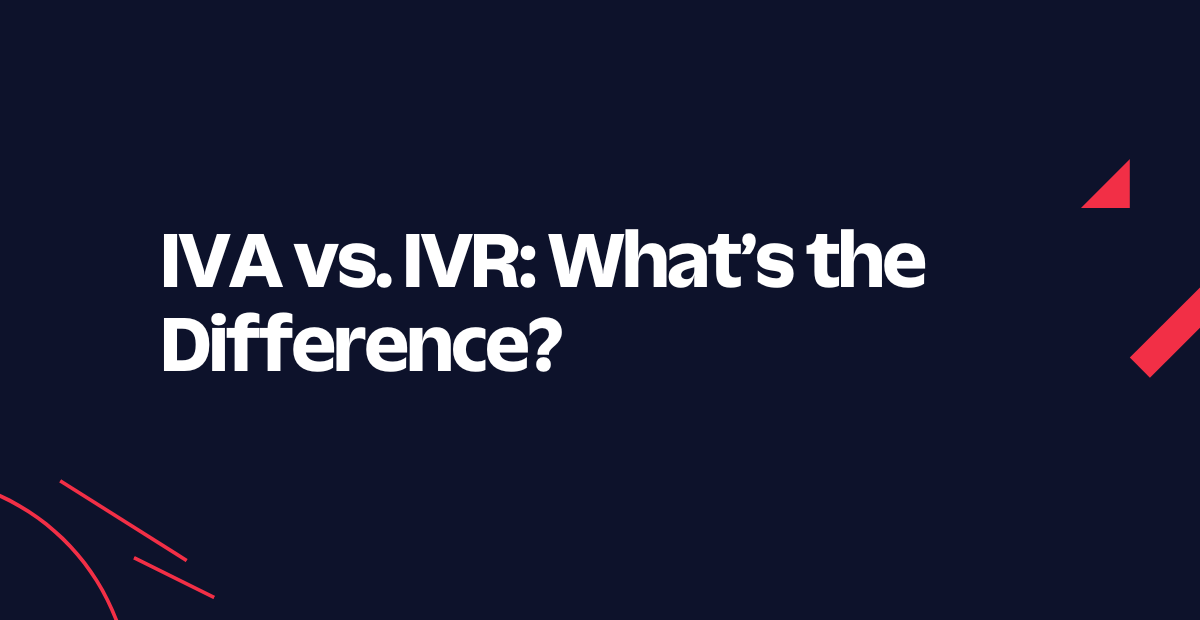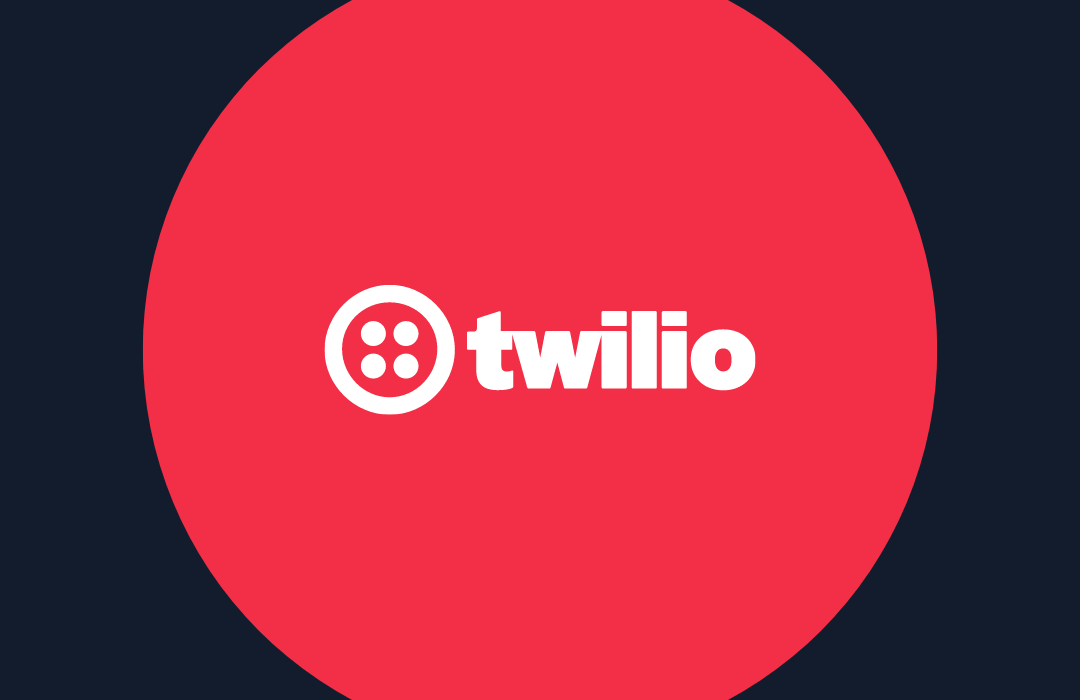IVA vs. IVR: What’s the Difference?
Time to read: 5 minutes

Excessive hold times—despised by businesses and consumers alike—will soon become a hassle of the past. To increase efficiency and improve the customer experience, most call centers today use virtual solutions to support agents.
Interactive virtual assistant (IVA) and interactive voice response (IVR) are similar yet distinct technologies that automate customer service interactions, reducing the need for a live agent. IVAs and IVRs usually result in shorter customer wait times and greater customer satisfaction. It's no wonder more modern call centers are adopting these technologies.
To explore the IVA vs. IVR debate, we’ll look at basic definitions, key differences, and factors that help determine what’s best for your organization.
What is IVR?
IVR is an automated telephony system that helps companies handle inbound calls. It uses voice recognition and touch-tone keypad selections to guide callers through menu options and information, allowing them to check an account balance, pay a bill, and complete other straightforward tasks without the help of an agent. With IVR streamlining basic inquiries, consumers save time and businesses save money.
The precursor to IVR is dual-tone multi-frequency (DTMF) signaling, which enables callers to answer voice prompts—“Press 1 for the sales department, 2 for billing,” and so on—by selecting an option with their keypad. Another piece of software, the automatic call distribution (ACD), then routes the caller to the department or agent best suited to help.
IVR incorporates DTMF and ACD while relying on voice recognition technology to help customers handle tasks independently. For instance, an IVR prompt might say, “Please enter or say your account number to pay your bill,” then route you to the payment portal to complete the task yourself.
The most advanced IVR uses natural language processing (NLP) software to identify keywords and even sentences like “I need to hear my account balance.” When programmed thoughtfully—with a diverse set of common words, phrases, and sentences gathered from calls—NLP can resolve customers’ questions quickly, making for more enjoyable calls and satisfied customers.
What is IVA?
Technologically, IVA picks up where IVR leaves off—and keeps on running.
Powered by conversational artificial intelligence (AI), IVA is a virtual assistant that analyzes customer inputs and responds with relevant information. Like IVR, IVA automates call center processes. However, unlike IVR, IVA can pull from customer data points stored in a company’s customer relationship management (CRM) platform to offer personalized support through human-like interaction. Moreover, an IVA contact center often incorporates chatbots and text-to-speech recognition to improve accessibility and ensure customers receive the support they need.
IVA uses advanced NLP and natural language understanding (NLU) software to respond to open-ended prompts and speak with customers in many different languages. NLU also enables IVA to recognize synonyms and informal language for even more enhanced processing and convincing responses. And through applying voice biometrics to verify caller identities, IVA helps protect against caller fraud and security breaches.
Sometimes, IVA technology can make laughable gaffes when interpreting human speech—similar to the hilarious responses you might’ve gotten from Apple’s Siri or Amazon’s Alexa when you ask for a song that doesn’t quite land. However, because IVA incorporates machine learning, the technology becomes more intelligent with every call it processes, sharpening its interpretive abilities over time.
While IVA isn’t yet advanced enough to debate philosophy with a customer, it can manage many detailed interactions and create helpful support tickets for issues that need a live agent.
What are the main differences between IVR and IVA?
While IVR and IVA share features like voice recognition and call routing, the technologies are for different purposes and situations. Below are some common differences between IVR and IVA:
IVR
- Relies on DTMF signaling, a preset menu, and simple voice commands to operate
- Can assist customers with straightforward tasks like checking an account balance
- Collects necessary information about a customer to transfer them to the correct department
- Can direct calls to agents and departments
- Prioritizes routing customers to the correct live agent
IVA
- Uses advanced NLP and NLU software to carry out human-like conversations
- Can provide answers to more complex questions and converse in multiple languages
- Integrates with CRM software to offer personalized support and record call details for future interactions
- Can create detailed support tickets before directing calls
- Prioritizes self-service resolutions for customers
Benefits of using IVR
Employing the more advanced technology might not always be the right choice for your organization. Here are some IVR benefits that could convince you it’s the optimal pick for your business:
- Time tested and functional. IVRs date back to the 1990s, so there’s been time to streamline the technology’s capabilities and functions. Most IVRs are more than sufficient for a business that needs help routing calls and resolving basic questions and support issues.
- Elevated brand perception. IVR can give smaller companies more perceived authority in the marketplace since many consumers consider the technology something that larger, more established companies use.
- Cost effective. IVR and IVA save companies money in decreased call center personnel hires, but generally, IVR is less expensive to implement. The technology also lowers operating costs through efficient call routing, increasing cost savings over time.
Benefits of using IVA
If you’re looking for a state-of-the-art call center, IVA is the way to go. The primary benefits of this advanced technology include:
- Increased capability to scale. IVA contact centers can be great for companies wanting to scale and eliminate the pressure to quickly hire dozens of call agents. This type of call center also handles large call volumes, even beyond the standard Monday-to-Friday workweek.
- Advanced language processing. IVA technology understands and communicates in multiple languages. It also applies biometrics for account verification, limiting the damage that can result from fraudulent account activity.
- Heightened sentiment analysis. IVAs can perceive when a customer gets frustrated and then routes the caller to an agent. This saves your company headaches, improves customer satisfaction and loyalty, and leads to positive brand perception.
- Decreased call abandonment. IVA offers customers the ability to bypass the dreaded hold time and receive help from the moment their call connects. This feature encourages customers to stay on the line until they get answers to their questions, boosting overall satisfaction rates.
- Better security and compliance. IVAs provide PCI-compliant and HIPAA-compliant services to securely process transactions, gather health data, and collect sensitive account information.
- Enhanced customer experience. IVA call centers can handle more complex interactions, leading to positive call experiences and lasting customer satisfaction.
For companies, choosing between IVR vs. IVA is about resources, priorities, needs, and goals. So when deciding which is better for your organization, consider your contact center’s automation needs.
Take, for example, small and medium-sized companies with relatively low call volumes that need more efficient call routing to live agents. These might find IVR sufficient for the company’s needs and budgets.
Conversely, businesses with high call volumes and customers needing round-the-clock support will probably benefit from IVA’s conversational AI and CRM-integration capabilities. These businesses will likely also find the virtual software more cost effective than hiring large numbers of call agents.
Build a customized contact center with Twilio Flex
Ready to develop a cutting-edge contact center for your business? Get started today.
With Twilio Flex, you have everything you need to design the ideal contact center agent experience, including support for email, SMS, WhatsApp, Facebook Messenger, and WebChat on one convenient platform. We can’t wait to see what you build.
Related Posts
Related Resources
Twilio Docs
From APIs to SDKs to sample apps
API reference documentation, SDKs, helper libraries, quickstarts, and tutorials for your language and platform.
Resource Center
The latest ebooks, industry reports, and webinars
Learn from customer engagement experts to improve your own communication.
Ahoy
Twilio's developer community hub
Best practices, code samples, and inspiration to build communications and digital engagement experiences.

.png)
